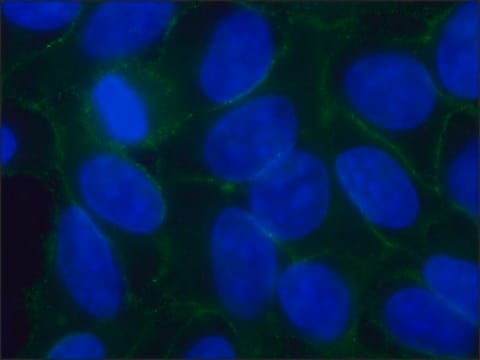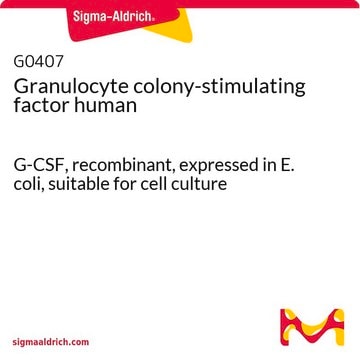C1821
Monoclonal Anti-Pan Cadherin antibody produced in mouse
clone CH-19, ascites fluid
Sinônimo(s):
Monoclonal Anti-Pan Cadherin
About This Item
Produtos recomendados
fonte biológica
mouse
conjugado
unconjugated
forma do anticorpo
ascites fluid
tipo de produto de anticorpo
primary antibodies
clone
CH-19, monoclonal
peso molecular
antigen 135 kDa
contém
15 mM sodium azide
reatividade de espécies
canine, frog, snake, guinea pig, chicken, pig, feline, bovine, rabbit, hamster, Psammomys (sand rat), goat, rat, human, sheep, mouse
técnica(s)
immunohistochemistry (formalin-fixed, paraffin-embedded sections): 1:500 using protease-digested animal heart sections
indirect immunofluorescence: 1:500 using cultured MDBK cells
microarray: suitable
western blot: suitable
Isotipo
IgG1
nº de adesão UniProt
aplicação(ões)
research pathology
Condições de expedição
dry ice
temperatura de armazenamento
−20°C
modificação pós-traducional do alvo
unmodified
Informações sobre genes
human ... CDH1(999) , CDH2(1000) , CDH3(1001)
mouse ... Cdh1(12550) , Cdh2(12558) , Cdh3(12560)
rat ... Cdh1(83502) , Cdh2(83501) , Cdh3(116777)
Procurando produtos similares? Visita Guia de comparação de produtos
Descrição geral
Cadherins that are primarily located in areas of cell-cell contacts are involved in selective cell sorting and in the mechanical cytoplasmic response. They are implicated in morphogenetic processes, intercellular signalling and in tumor invasiveness and metastasis.
Multiple cadherins have been characterized from diverse species and tissues including E-Cadherin, N-Cadherin (A-CAM), P-Cadherin, V-Cadherin, R-Cadherin and T-Cadherin. Specific polyclonal antibodies against a highly conserved sequence from the cytoplasmic C-terminal of N-Cadherin has been prepared.
Especificidade
Imunogênio
Aplicação
- fluorescence imaging
- immunohistochemistry
- western blotting
- immunoblotting
- immunofluorescence
Ações bioquímicas/fisiológicas
Exoneração de responsabilidade
Not finding the right product?
Try our Ferramenta de seleção de produtos.
recomendado
Código de classe de armazenamento
12 - Non Combustible Liquids
Classe de risco de água (WGK)
nwg
Ponto de fulgor (°F)
Not applicable
Ponto de fulgor (°C)
Not applicable
Certificados de análise (COA)
Busque Certificados de análise (COA) digitando o Número do Lote do produto. Os números de lote e remessa podem ser encontrados no rótulo de um produto após a palavra “Lot” ou “Batch”.
Já possui este produto?
Encontre a documentação dos produtos que você adquiriu recentemente na biblioteca de documentos.
Os clientes também visualizaram
Nossa equipe de cientistas tem experiência em todas as áreas de pesquisa, incluindo Life Sciences, ciência de materiais, síntese química, cromatografia, química analítica e muitas outras.
Entre em contato com a assistência técnica












